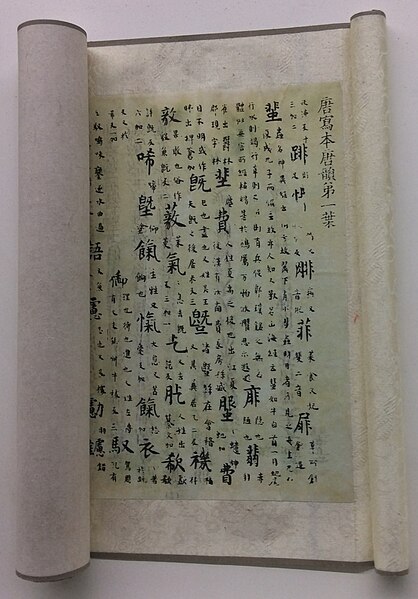Reconstructions of Old Chinese
Although Old Chinese is known from written records beginning around 1200 BC, the logographic script provides much more indirect and partial information about the pronunciation of the language than alphabetic systems used elsewhere.
Several authors have produced reconstructions of Old Chinese phonology, beginning with the Swedish sinologist Bernhard Karlgren in the 1940s and continuing to the present day.
The method introduced by Karlgren is unique, comparing categories implied by ancient rhyming practice and the structure of Chinese characters with descriptions in medieval rhyme dictionaries, though more recent approaches have also incorporated other kinds of evidence.
The start of the first rhyme class (東 dōng "east") of the Guangyun rhyme dictionary
A rime dictionary, rhyme dictionary, or rime book is an ancient type of Chinese dictionary that collates characters by tone and rhyme, instead of by radical. The most important rime dictionary tradition began with the Qieyun (601), which codified correct pronunciations for reading the classics and writing poetry by combining the reading traditions of north and south China. This work became very popular during the Tang dynasty, and went through a series of revisions and expansions, of which the most famous is the Guangyun (1007–1008).
Copy of the Tangyun, an 8th-century edition of the Qieyun
Copy of fragments of the Wang Renxu edition of the Qieyun
Sea of Characters, level tone folio 53
Image: Guangyun Dong Rhyme 1




